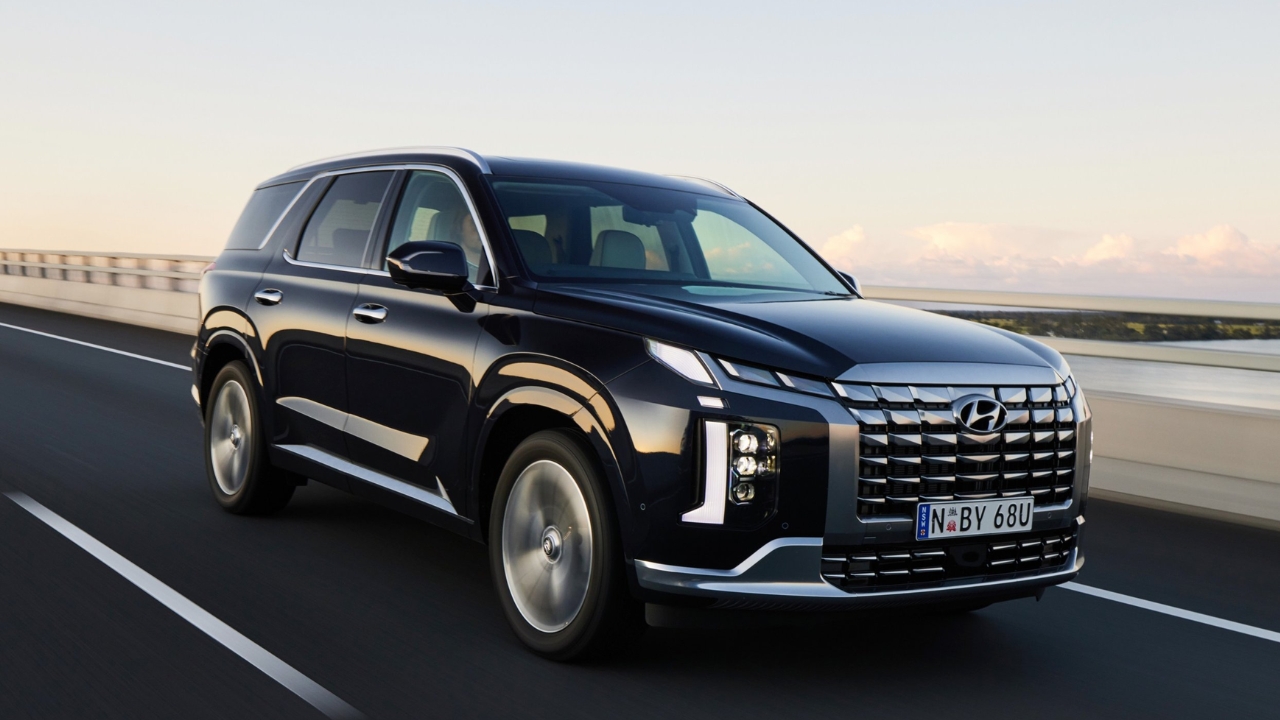The upcoming second-generation Hyundai Palisade marks a significant powertrain shift, following the Santa Fe’s lead by completely eliminating diesel engines from its lineup. The large family SUV will exclusively feature turbocharged four-cylinder petrol power when it arrives in Australia during 2025.
Engine Revolution – Out with the Old
Previously available with both a 2.2-litre turbo-diesel and 3.8-litre V6 petrol engine, the new Palisade simplifies its powertrain offerings dramatically. The incoming model relies solely on a turbocharged 2.5-litre four-cylinder petrol engine, available in both standard and hybrid configurations.
This strategic move aligns with Australia’s New Vehicle Efficiency Standard (NVES), which starts on 1 January 2025 and will apply only to new cars. The legislation aims to cut emissions from new passenger cars by over 60% by 2030.
Power and Performance Specifications
The new turbocharged 2.5-litre engine delivers impressive outputs, producing 207kW in standard form and 246kW when paired with hybrid assistance. While torque figures reach 422Nm for the petrol-only variant, the hybrid system contributes additional electric motor torque of 264Nm.
| Specification | 2025 Diesel | 2025 V6 Petrol | 2026 Turbo Petrol | 2026 Hybrid |
|---|---|---|---|---|
| Engine Type | 2.2L Turbo Diesel | 3.8L V6 | 2.5L Turbo Petrol | 2.5L Turbo + Electric |
| Power Output | 147kW | 217kW | 207kW | 246kW |
| Torque | 440Nm | 355Nm | 422Nm | 353Nm + 264Nm |
| Transmission | 8-Speed Auto | 8-Speed Auto | 8-Speed Auto | 6-Speed Auto |
| Drive Options | AWD Only | FWD Only | FWD/AWD | FWD/AWD |
Size Matters – Growing Dimensions
The 2026 Palisade expands across every measurement, gaining 65mm in length, 5mm in width, and 55mm in height. The extended 2970mm wheelbase promises enhanced interior space and passenger comfort.
Environmental Impact and Compliance
Fuel consumption figures reveal the challenges facing traditional internal combustion engines under the NVES framework. The new turbo-petrol engine shows higher consumption rates (10.3-12.2L/100km) compared to the outgoing diesel (8.6-8.8L/100km), potentially triggering penalty mechanisms under the efficiency standard.
However, the hybrid variant should deliver significantly improved efficiency figures, though Hyundai hasn’t released official consumption data yet.
Interior and Technology Upgrades
Inside, the new Palisade features dual 12.3-inch displays for instrumentation and infotainment, seamlessly integrated into a redesigned dashboard. Premium materials include striated wood-look trim with ambient lighting, while the centre console adopts a floating peninsula design housing wireless charging and USB-C connectivity.
South Korean markets offer both seven and nine-seat configurations, though Australian deliveries will likely focus on the seven-seat layout. New exterior colours include Ecotronic Grey Pearl and Galaxy Maroon Pearl options.
Pricing Expectations
With South Korean pricing increasing 10-15 percent over the current generation, Australian buyers should expect entry prices exceeding $70,000. Current Palisade pricing ranges from $66,800 to $79,988 before on-road costs.
Frequently Asked Questions
Q: When will the 2026 Hyundai Palisade arrive in Australia? A: Australian deliveries are expected to commence in 2025, with exact timing to be confirmed by Hyundai Australia.
Q: Will the hybrid version be available from launch? A: Hyundai hasn’t confirmed simultaneous availability, though both powertrain options are planned for the Australian market.
Q: How does the NVES affect the new Palisade? A: The efficiency standard may result in higher costs for less efficient variants, making the hybrid option more attractive financially.
Also Read:-BYD Shark 6 Shines in June VFACTS as Aussie New-Car Sales Rebound
